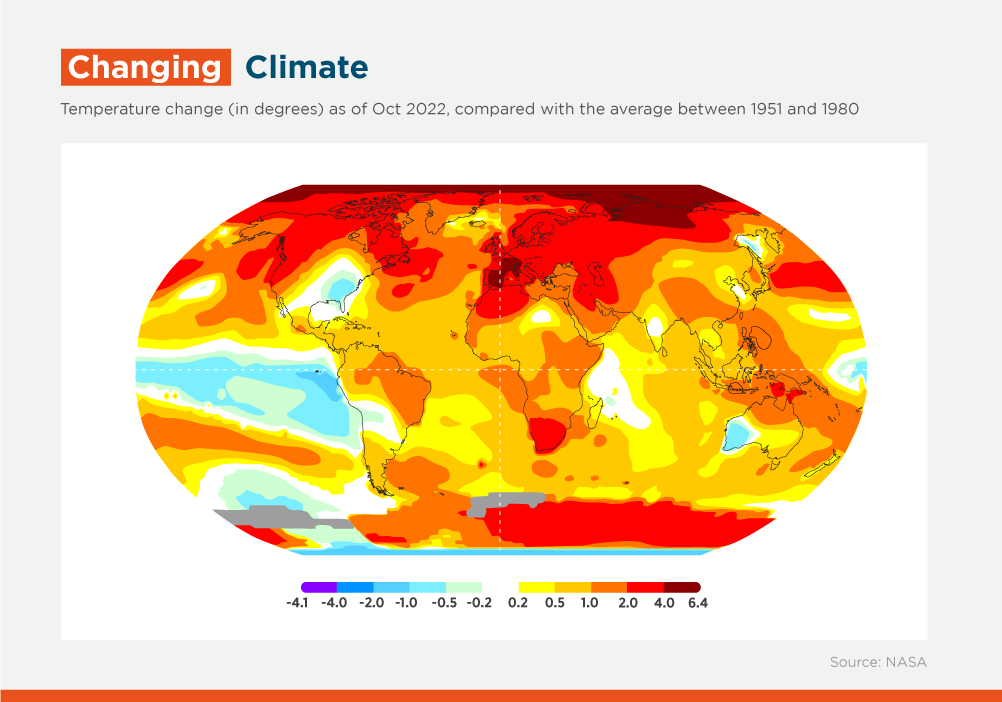Adaptation, the Climate Opportunity for the Private Sector

(This article was originally published in Forbes.)
If we are to prevent the climate-related losses already in progress, Latin America and the Caribbean should invest as much as an additional $18 billion per year, one of the largest adaptation financing gaps in the world.
This is a big opportunity for the region’s private sector to lead in closing that gap. The focus in the fight against climate change has long been on emissions, but now adaptation is joining under the spotlight, to reduce countries’ vulnerability to deal with massive climate disruptions and natural disasters. This concept refers to having a greater capacity to respond to the already evident effects of climate change.
This is particularly relevant for our region. Nine of the twenty countries with the highest climate-related losses as a percentage of GDP are located here, according to a CELAC report. The latest hurricanes in Mexico, Dominican Republic, or Central America, and droughts like the one in Argentina are recent examples.

Agriculture, infrastructure, water, and disaster risk management have some of the highest adaptation finance needs. For developing countries, annual adaptation costs are estimated at $70 billion, and they are expected to reach $140-$300 billion in 2030.
However, of all climate finance, adaptation accounted for only 7%, and 98% of it was funded by public actors. This is insufficient. In Latin America and the Caribbean, finance must be multiplied.
Investing in preventative adaptation solutions can be more effective and less costly for the private sector than a late response. A strong effort to adapt operations and supply chains to ensure business continuity is needed, providing finance, and supporting companies through products and services that build resilience.
The opportunities available to adapt to climate change remain largely unmet. A FELABAN report recently found that only 49% of Latin American and Caribbean banks offer green products and services, well below the 95% average for international banks.
Financial institutions must step up their role in channelling capital flows toward green investments. This sustainable business opportunity has social and economic benefits. The overall rate of return on investments in improved resilience is very high, with benefit-cost ratios ranging from 2:1 to 10:1 and reaching even higher ratios in some cases.
At IDB Invest, we are already partnering with financial institutions to create tailor-made plans to better serve the green segment, measure their impact, and capitalize on opportunities in primary and secondary markets.
In our recent report Scaling Adaptation Finance in the Private Sector, we explain how we are integrating climate adaptation across deals, including working with clients to design sustainability and climate strategies that consider climate-proofing their businesses, developing knowledge products for the financial sector to scale up adaptation finance, and introducing the "climate-events clause" and climate scenarios in risk analysis.
To date, we have supported 24 clients in nine countries to issue green, social, and sustainable bonds for about $1.3 billion. Last year, more than half of IDB Invest’s record $3 billion resource mobilization went to climate investments, and we launched a pioneering mechanism to monetize decarbonization cost in a $125 million project with Engie Energía in Chile.
As we face the greatest challenge of our generation, we must be cognizant of the multiplying effect of directing capital flows toward adaptation investments. During this COP27 in Egypt, some may say that the climate issue may not be that urgent in the middle of the many crises the world is facing, but they are wrong.
Private sector-driven climate adaptation is the way to respond by seeing this moment as a threat to business-as-usual and an opportunity to generate impact. People in our region are already suffering the consequences. More than a challenge, we must address the climate crisis as a chance to grow different and better.
LIKE WHAT YOU JUST READ?
Subscribe to our mailing list to stay informed on the latest IDB Invest news, blog posts, upcoming events, and to learn more about specific areas of interest.
Subscribe


